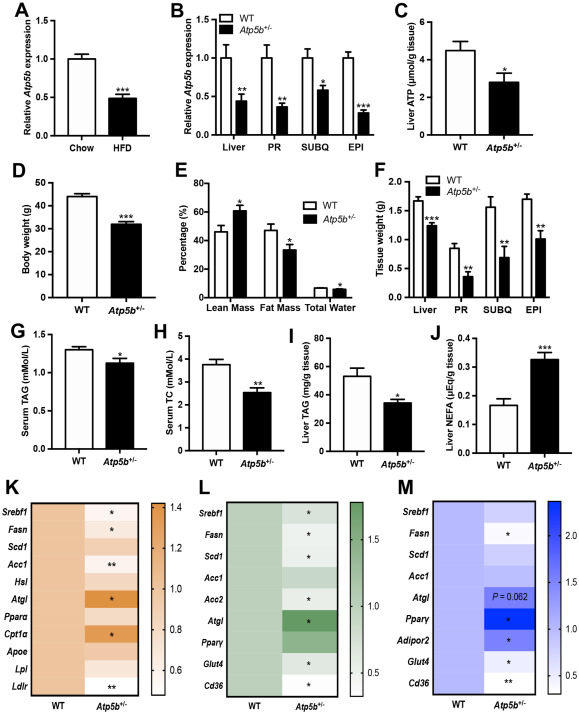
Reduction of Atp5b protects mice from diet-induced obesity


Obesity related metabolic diseases, including non-alcoholic fatty liver disease, insulin resistance, hyperglycemia, and hyperlipemia, have become major chronic diseases.1,2 As an important enzyme for ATP production,3 ATP5b plays a role in many diseases, including cancer, bone homeostasis, and microvascular proliferation.4,5 This study was conducted to investigate the role of ATP5b in glucose and lipid metabolism. Results showed that expression of Atp5b was markedly reduced in diet-induced obese mice and pigs. Heterozygote Atp5b knockout (Atp5b+/−) mice had lower body weight, adipose tissue weight, and triglyceride content in both serum and the liver than their wild-type (WT) littermates under high-fat diet conditions. Furthermore, gene expression of Atgl in the liver and adipose tissue was higher in Atp5b+/− mice than in WT mice.
